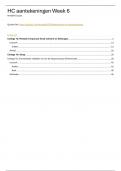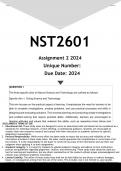Class notes
Collegeaantekeningen Leren en geheugen (5102LEGE9Y) Week 6
- Course
- Institution
- Book
Een uitgebreide en overzichtelijke samenvatting van de hoorcolleges uit week 6 voor deeltentamen 2 van het vak Leren en Geheugen van de studie Psychobiologie aan de UvA ().
[Show more]













